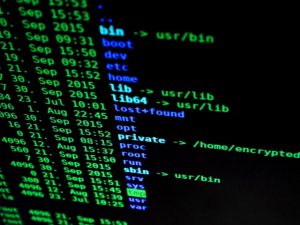Why Trading Card Games Are Booming
If you’ve ever walked into a trading card store, you’ve probably noticed the buzz and excitement around trading card games. These games have experienced a remarkable surge in popularity, especially among younger players and collectors alike. In places like New Zealand, the demand for cards, particularly Pokémon cards, has skyrocketed, capturing the imagination of many. Whether it’s the thrill of collecting, the joy of gameplay, or the community built around these cards, there’s a lot to talk about when considering why trading card games are booming right now.
At the heart of this phenomenon is the perfect storm of nostalgia, community, and accessibility. A large number of adults who played these games as children are now revisiting them, while new generations are discovering the appeal for the first time. The combination of collecting and competitive play creates a unique experience that draws people in, both as casual fans and serious hobbyists. What’s more, trading card games often come with beautiful artwork and strategic depth, making them appealing on multiple levels.
One of the biggest factors driving the growth is the social aspect. Trading card games are not just about the cards themselves but about the connections formed between players. Local shops have become hubs where players gather for tournaments, trade sessions, and casual games. This sense of community helps fuel enthusiasm and keeps the hobby alive and growing.

Nostalgia Meets New Generations
The boom can partly be traced back to the nostalgia many adults feel for the trading card games they enjoyed as kids. Over the past few years, many of those adults have returned to the hobby, bringing with them a fresh wave of interest and spending power. This creates a unique market dynamic where collectors seek out rare or vintage cards, while younger players are eager to dive into new releases and expansions.
In New Zealand, for example, many parents have introduced their children to trading card games they once loved. This cross-generational interest has helped the hobby thrive in ways that weren’t possible a decade ago. A local trading card store in Auckland saw a steady increase in customers from families looking for both classic and current cards. The shop hosts regular family-friendly events, making it easy for people of all ages to join in. This kind of environment encourages parents and kids to bond over the shared experience of collecting and playing.
The Role of Local Trading Card Stores
Another key reason behind the boom is the role played by local trading card stores. These stores aren’t just places to buy cards; they are community centres that bring players together. Many shops offer organised play events, tournaments, and trade nights, giving people a chance to meet, compete, and bond over their shared interests.
Take, for instance, a store in Wellington that started as a small hobby shop but has grown into a vibrant social space. It regularly runs tournaments that attract dozens of players, from newcomers to seasoned pros. This kind of grassroots support creates an environment where the trading card scene can flourish. The staff often act as mentors, helping beginners learn the rules and strategies, which lowers the barrier to entry and helps grow the community.
Accessibility and Online Influence
The digital age has also played a major role in expanding the appeal of trading card games. Online communities, streaming platforms, and social media channels allow players to connect beyond their local areas. Players can watch gameplay tutorials, follow competitive scenes, and engage in trading without leaving their homes.
In New Zealand, this online presence has helped connect smaller, more remote communities with the broader trading card scene. For example, a young player in Christchurch shared how online forums and social media groups helped him find trading partners and learn new strategies, enriching his experience far beyond what was possible through local shops alone. This virtual community complements the in-person connections made at local events and stores, creating a well-rounded experience.
The Thrill of Collecting and Strategy
One of the reasons trading card games continue to captivate players is the blend of collecting and strategy. Each card can hold different values, not just monetary, but also in how it fits into a player’s deck. This mix of collecting rare cards and building winning decks keeps players engaged for years.
In New Zealand, a growing number of collectors have taken the hobby seriously, attending auctions and trading events to find elusive cards. This collector culture has added a new layer of excitement to the trading card community, as players seek out cards that not only look great but also enhance their gameplay. For many, the chase for rare or special-edition cards can be as thrilling as the game itself.
Real-Life Examples from New Zealand
- Community Events in Auckland: One trading card store in Auckland holds weekly gatherings where players of all skill levels can compete and trade. These events have grown so popular that they regularly draw over 50 participants, fostering friendships and a strong local trading card community. The shop’s welcoming atmosphere encourages newcomers to stick around and learn, helping the community to expand continually.
- Family Engagement in Wellington: In Wellington, a store’s family-oriented tournaments have attracted parents and children alike. The events create a welcoming atmosphere, encouraging cross-generational participation and nurturing a new generation of enthusiasts. Parents often remark on how these events have helped their children develop social skills and confidence while sharing something fun together.
- Online Connections in Christchurch: A player in Christchurch shared how online trading communities helped him connect with others, discover rare cards, and improve his gameplay. This digital connection has complemented the physical trading card culture, making it more inclusive for those who might not have easy access to local stores or events. The online groups also organise regional meetups, strengthening the community even further.
Why It’s More Than Just a Game
In addition to fun, trading card games also offer as sense of belonging and a creative outlet. For many players, it’s about building friendships, developing critical thinking, and sharing a passion with others. The boom in trading card games reflects a broader trend toward hobbies that combine social interaction, mental challenge, and collectible joy.
Moreover, the appeal of these games transcends age and background. Whether you’re a child discovering the excitement for the first time or an adult revisiting a cherished pastime, trading card games offer something meaningful. This inclusive appeal is a key reason why the hobby continues to grow around the world and particularly in places like New Zealand.
As trading card games continue to evolve, it’s likely that their popularity will keep rising. New expansions, innovative gameplay mechanics, and growing communities will ensure that the hobby remains fresh and exciting. For local stores and players alike, this means more opportunities to connect, compete, and enjoy the thrill of the game.
If you haven’t yet explored the world of trading card games, there’s no better time to start. Whether you’re drawn by the artwork, the strategy, or the community, you’ll find plenty to enjoy in this vibrant and booming hobby. And if you’re in New Zealand, local trading card stores and events offer great ways to get involved and experience the excitement firsthand.





























 t is the dawn of the next Industrial Revolution. Labour is being liberated by new technology. We’ll be visiting more state-of-the-art machines on our construction sites rather than armies of hard-hatted guys. Currently, robots with circuit-board brains and screw-fastened bodies may construct full-sized houses for humans in only a day. 3D printing can create buildings with zero waste, powered by electricity or sunlight’s energy.
t is the dawn of the next Industrial Revolution. Labour is being liberated by new technology. We’ll be visiting more state-of-the-art machines on our construction sites rather than armies of hard-hatted guys. Currently, robots with circuit-board brains and screw-fastened bodies may construct full-sized houses for humans in only a day. 3D printing can create buildings with zero waste, powered by electricity or sunlight’s energy. Drones
Drones In actuality, many small business coach training companies boast an international roster of clients. So coaches will need to master the fundamentals of technology to be able to feel professional and prevent frustrating customers and themselves.
In actuality, many small business coach training companies boast an international roster of clients. So coaches will need to master the fundamentals of technology to be able to feel professional and prevent frustrating customers and themselves.
